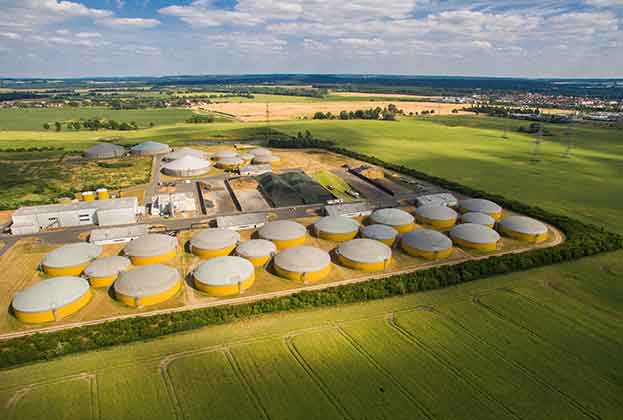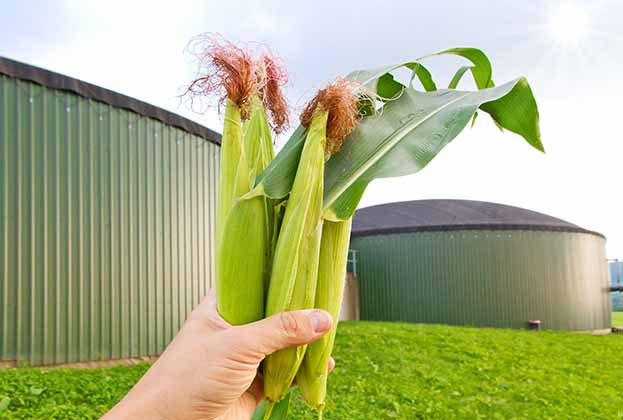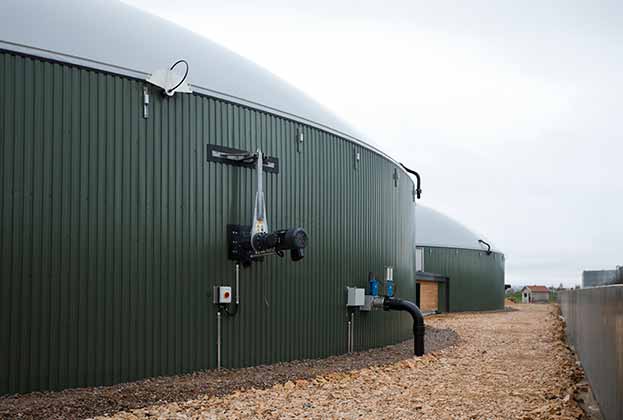If the UK cannot kick its gas addiction by 2050 then it could instead make it a green supply, which would be an alternative to electrification
The Sixth Carbon Budget is the first to consider the UK’s legal commitment to net zero by 2050 – a 100% reduction in carbon emissions against the 1990 baseline. It is 44% lower than the Fifth Carbon Budget and 51% lower than the Fourth Carbon Budget, both of which the UK is already on course to miss. To get the country back on track, heat and transport will be particular challenges.
The primary solution for reducing our carbon emissions is to electrify heat and transport, but the concern is that fully electrifying these sectors could overload our grid. An alternative is to utilise the existing gas network with low carbon substitutes such as hydrogen. However, deployment of hydrogen generation is still highly conceptual.
This brings us to another alternative – anaerobic digestion (AD). This is a process by which organic matter such as animal or food waste is broken down to produce methane. It happens in a sealed, oxygen-free tank called an anaerobic digester. AD plants capture the methane produced via this process and utilise it commercially in generating energy. This biogas can be used directly as fuel in transport or by injecting it into the mains gas system (known as Gas-to-Grid or GtG). When burned, the only carbon dioxide released is that which was absorbed by the organic matter in the first place, resulting in zero net emissions.
Green methane or hydrogen represent an alternative to the electrification route, with the key advantage of being as flexible in their uses as traditional natural gas
Joe Lloyd, Research Analyst, Rural Research
Green methane and hydrogen both represent alternatives to the electrification route that retain the versatility and convenience that we have come to associate with traditional natural gas. The Government’s December 2020 Energy White Paper mentions hydrogen 129 times and AD just twice. Yet it is AD that is receiving a new subsidy in the Green Gas Support Scheme (GGSS), as it is a proven technology. The scheme is an incentive to increase the proportion of green gas in the grid. It will add the cost of the subsidy to the public’s gas bills, in the same way the subsidies that supported wind and solar farms were.
Past success
Our previous Spotlight on Anaerobic Digestion in 2018 focused on agricultural AD plants with combined heat and power (CHP). The typical scale of these projects was 250kW to 2MW, with over 750 plants built. Any biogas produced is primarily burned onsite to produce electricity, with heat being a useful by-product where there is a local demand. Under the Non-Domestic Renewable Heat Incentive (NDRHI), these small biogas projects made up around 4% of all full NDRHI applications and around 6% of all the heat generated and paid for under the scheme.
GtG AD plants are larger, typically equating to between 5MW and 6MW. GtG plants made up less than 1% of all applications under the NDRHI, but were responsible for almost a quarter of all heat generated and subsidised under the scheme. That 12,500GWh of gas generated between November 2011 and January 2020 is a mere 0.02% of the 512TWh of natural gas consumed in 2019 alone. Nonetheless, the UK seeks to reduce its reliance on natural gas and biomethane remains a proven technology with further potential.
The NDRHI initially had no limit on the size of plant it would support. A tiered system of support was introduced for plants commissioned after January 2015, which created a sweet spot of around a 40GWh output. The chart below (top) shows that this is where most existing plants’ output is targeted. The GGSS is proposing to raise the first tier of funding to 60GWh, making it likely we will see larger plants going forward. With subsidy support at a high level and coinciding with upskilling in the technology, it is unsurprising that we saw a surge in AD development, between 2014 and 2016 (chart below, bottom).
As we found with agricultural AD plants, the ramp-up time (the time it takes for a plant to produce gas at its target level) for biomethane plants can be on the scale of years rather than months. Typically a large AD plant would be targeting full output by the end of its first year of operation.
Output levels
The box and whiskers chart (see below) shows the output of GtG plants over the first four years of operation as a percentage of those plants’ final maximum output. The box represents the inter-quartile range of plants (ie. the middle 50% of plants – 25% either side of the median) and the whiskers represent the data points that lie within 1.5 times the inter-quartile range. The whiskers give a measure of the outlying data and plants that lie outside the whiskers are denoted outliers. We analysed 85 plants.
The chart shows that some plants are at their maximum output in the first year, proving that with correct preparation, ramp-up can take a matter of months. However, the majority of plants are taking up to three years to reach the higher levels of outputs1. These plants are losing out on guaranteed income that is promised for 20 years with the NDRHI. One of the major changes to the GGSS is a reduction in the period over which subsidies will be paid to 15 years, making slow ramp-up even more costly.
Green premium
So far the primary route to market has been through the NDRHI, which provides a payment for each unit of gas injected into the mains gas system. These plants also receive payments for the wholesale value of the gas and, in addition to this, can receive a premium payment for the fact that gas is considered low carbon.
Savills Energy brokerage team reports a rising demand for 'green' gas supplies. The short supply of green gas, combined with a rising demand, is pushing prices up. Green Gas certificates were trading at £9/MWh (pre-Covid-19), up from just £2/MWh in 2018. This is paid over and above the normal price of the gas.
Savills Energy brokerage team reports a rising demand for 'green' gas supplies. The short supply of green gas, combined with a rising demand, is pushing prices up
Joe Lloyd, Research Analyst, Rural Research
Funded by the Green Gas Levy, we estimate the proposed budget for the GGSS will support approximately 55 to 65 new GtG plants. This makes it a small market when compared to over one million domestic and commercial solar installations and approximately 11,000 wind installations in the UK. Yet it is a niche that is a proven technology and an alternative route to the electrification of heat and transport.
The GGSS was announced in the March 2020 budget and will pick up from the NDRHI, which ended in March 2021, by offering similar levels of support to biomethane production. The scheme will run to 2025–2026 and the current proposal is to only support green gas from AD, but this may be expanded to include others, such as hydrogen production.
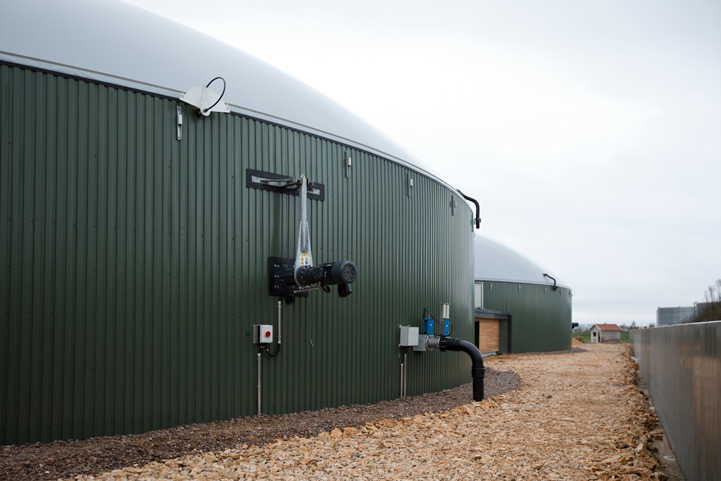
Transforming transport
When used for transport, biomethane is well suited to HGV traffic and many commercial fleets of vehicles are converting to compressed natural gas, a ready market for biomethane. There is existing support for the use of biomethane under the Renewable Transport Fuel Obligation (RTFO). However, the value from this scheme is highly volatile and it is difficult to create a bankable case for an AD plant following this route alone.
1 The graph’s calculations are based on output as a percentage of each plant’s maximum output and not necessarily output as a percentage of that plant’s target output.
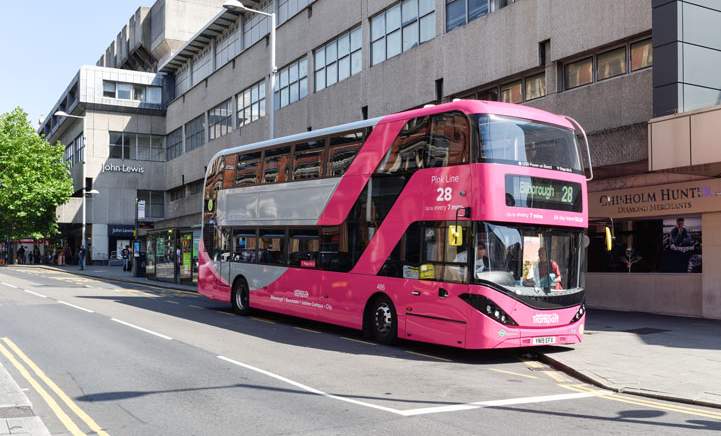
Green gas or hydrogen?
The GGSS provides scope for other technologies to be supported by it in the future. This could be gasification or hydrogen, but at present, the government does not have sufficient evidence that these can create a viable commercial opportunity in the same way that AD can. Yet the potential virtues of hydrogen mean it cannot be discounted. It has the potential to be a zero emission and adaptable fuel that can be deployed across multiple sectors. Requiring only water and energy to create, hydrogen would also be scalable to a far greater degree than AD, but only if a commercially competitive offering can be developed. Presently, the potential to blend hydrogen with existing natural gas infrastructure still requires further work before the UK government will provide support. Industry trials assessing up to 20% hydrogen blends within existing natural gas infrastructure are due to conclude in 2023.
Read the articles within Spotlight: Anaerobic Digestion below.
.jpg)
